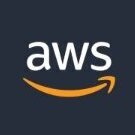#windows
-
Amazon EC2 makes it easier to launch Windows instances with EC2 Fast Launch
-
Windows 11
- 1 comment
- 445 views
-
BatBadBut Vulnerability Exposes Windows Systems To Attacks
-
Ubuntu outperforms Windows 11 on the Framework Laptop 16 with Ryzen 7 7840HS
-
failed to generate SSH key on Windows
-
How to Create a Windows 11 Virtual Machine on Proxmox VE 8
- 1 comment
- 80 views
-
Amazon CloudWatch Container Insights announces observability for Windows containers on Amazon EKS
-
Introducing the Windows Operational Readiness Specification
-
Run Chef 11-18 recipes on Windows using AWS Systems Manager
-
Amazon AppStream 2.0 can now launch IdP-initiated sessions using the Windows client
-
How to Add a Windows SMB/CIFS Share as Storage on Proxmox VE
- 1 comment
- 110 views
-
AWS adds Managed Policies to VSS to help ensure valid application consistent backups
-
Microsoft's newly-unified Windows and Surface Team gets a new head — restructuring and AI in Redmond
-
Mount Windows Share on Linux using CIFS
-
AWS Fargate announces a price reduction for Windows containers on Amazon ECS
-
How to Get Started With Kubernetes and Kubectl on Windows
- 1 comment
- 85 views
-
Windows on Snapdragon Brings Hybrid AI to Apps at the Edge
-
Terraform: Create Azure Windows VM with file, remote-exec & local-exec provisioner
-
Creating a Golden Image for Windows VMs in OpenShift Virtualization
-
3 Ways to Synchronize Windows Clock with an Internet Time Server


.png.6dd3056f38e93712a18d153891e8e0fc.png.1dbd1e5f05de09e66333e631e3342b83.png.933f4dc78ef5a5d2971934bd41ead8a1.png)






